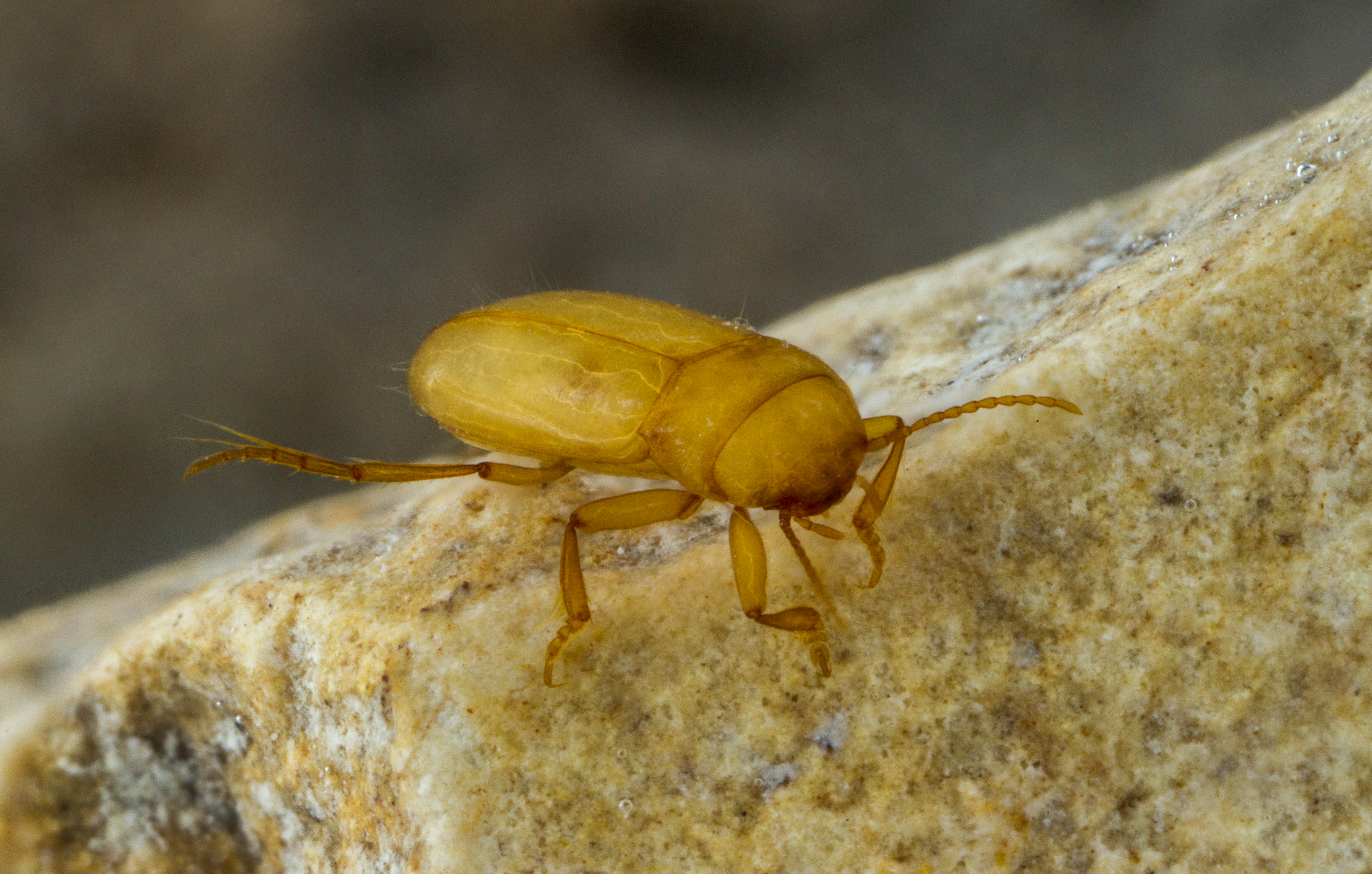Texas Cave Diving Beetle

Covered Species Information
Authored by Connor Helsel
The Edwards Aquifer diving beetle (Haideoporus texanus) is not currently listed as an endangered species, but rather as a species petitioned to be included on the federal list of threatened and endangered species. Evidence suggest that the species’ survival is threatened by habitat loss, over-extraction of water resources, and a decrease in water quality due to development in the region (U.S. Fish and Wildlife Service [USFWS], 2009). Nevertheless, the Edwards Aquifer diving beetle is covered under the Edwards Aquifer Habitat Conservation Plan (EAHCP) and is currently aided by various EAHCP Conservation Measures.
Common name
Edwards Aquifer diving beetle (or Texas cave diving beetle)
Scientific name
Haideoporus texanus
Endangered Species Act status
Petitioned
Maximum size
Less than 13 mm (0.5 inches) in length (Edwards Aquifer Recovery Implementation Program [EARIP], 2012).
Physical description and Life History
The Edwards Aquifer diving beetle is a subterranean aquatic beetle in the Dytiscidae family and is the first aquifer-adapted diving beetle of its kind found in North America These diving beetles have an oval shaped body with little pigment and lack hindwings. The Edwards Aquifer diving beetle is blind but has elongated sensory setae to help it move through its environment- adaptations to its subterranean habitat (Young and Longley, 1976).
Distribution
The Edwards Aquifer diving beetle occurs within the subterranean waters of the Edwards Aquifer in Hays and Comal counties (Bowles & Stanford, 1997; USFWS, 2009).
Habitat
The species is rarely seen but has been collected from an artesian well in the San Marcos pool of the Edwards Aquifer and from spring openings in the Comal Springs system (Bowles & Stanford, 1997).
References
Bowles, D., & Stanford, R. (1997). A New Distributional Record for Haideoporus Texanus (Coleoptera: Dytiscidae), a Stygobiontic Beetle From the Edwards Aquifer, Texas. Entomological News 108(4), 297-299.
Edwards Aquifer Recovery Implementation Program. (2012). Habitat Conservation Plan. 414.
Gibson, J. R., Harden, S. J., & Fries, J. N. (2008). Survey and Distribution of Invertebrates from Selected Springs of the Edwards Aquifer in Comal and Hays Counties, Texas. The Southwestern Naturalist, 53(1), 74–84.
National Academies of Sciences, Engineering, and Medicine. 2018. Review of the Edwards Aquifer Habitat Conservation Plan: Report 3. Washington, DC: The National Academies Press. https://doi.org/10.17226/25200
U.S. Fish and Wildlife Service. (2009). Part 3 Department of the Interior, Fish and Wildlife Service Endangered and threatened wildlife and plants; partial 90-day finding on a petition to list 475 species in the southwestern United States as threatened or endangered with critical habitat; proposed rule. 74 Fed. Reg. 66866-66905 (Dec. 16, 2009) (to be codified at 50 C.F.R. pt. 17).
Young, F. N., & Longley, G. (1976). A New Subterranean Aquatic Beetle from Texas (Coleoptera: Dytiscidae-Hydroporinae). Annals of the Entomological Society of America, 69(5), 787–792. https://doi.org/10.1093/aesa/69.5.787